One morning, as I climbed the roads of Sintra, the mist wrapped itself around the hill like a blanket and gazed up into the dense forest. It clung there, hiding what was behind. As the road turned, I saw the Pena Palace, suspended high above the town, as if painted in watercolors of wild yellow, rose, and cobalt. The palace loomed large in the cloud bank like a postcard come to life. I took my camera from my bag and stopped dead in my tracks.
This was the spectacular dream building that was perched on top of a hill, casting its gaze over Sintra and taking anyone who arrived there captive. You could be having the worst day of your life, and then all of a sudden, from the crest of that hill, you find yourself confronted with this fantasy come true. When you reach it, you know why, no matter how hard you try, you just cannot keep it out of your camera viewfinder.

Quick Facts: Pena Palace at a Glance
📍 Location: Sintra, Lisbon District, Portugal
🏗️ Construction Period: 1842–1854
🏰 Architectural Style: Romanticism with Manueline, Moorish, and Gothic influences
🎭 Famous For: Vivid colors, eclectic design, UNESCO World Heritage status
👑 Notable Figures: King Ferdinand II, Queen Maria II
🏆 UNESCO Status: Yes, part of the “Cultural Landscape of Sintra” (1995)
🌐 Official Website: Parques de Sintra

The History & Legends
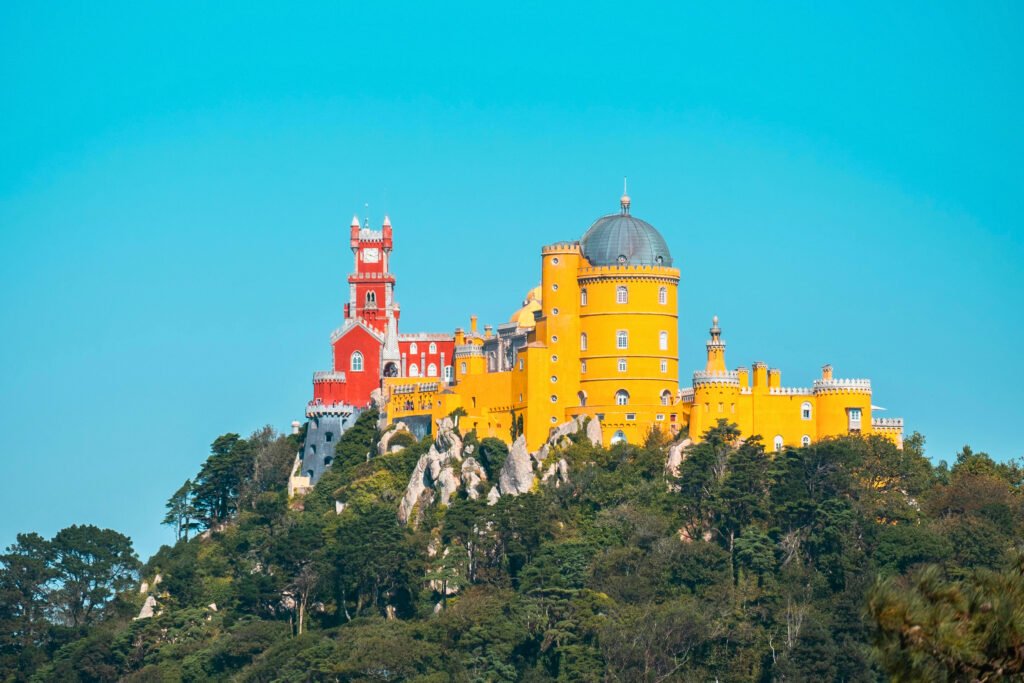
Before the striking turrets and flamboyant shapes of Pena Palace took over the show, the windswept hill of Sintra was home to something a lot more reserved and a lot less popular. Back in the early 16th century, a peaceful monastery was built here dedicated to Our Lady of Pena. It was no grand affair, more a simple house for a small community of monks living a contemplative life in the mists and the pines. The site was isolated up on its perch high above the valley and subject to the rolling clouds like a slow tide.
The monastery had a peaceful existence until 1755, when the great Lisbon earthquake hit. Although most of the damage was in the capital, Sintra also felt the effects, and the monastery was badly damaged by the tremors and subsequent fires. The chapel survived, but the rest was left as a ruin, and the monks left to find a new home. For decades, the ruins lay at the mercy of the elements and became a part of the landscape. Pilgrims would still come to the hillside and visit the chapel, their footsteps echoing on the mossy stones, but the importance of the site seemed to be over.
In the 19th century, it was resurrected thanks to the arrival of Ferdinand of Saxe-Coburg and Gotha, better known as King Ferdinand II of Portugal. Ferdinand was an Austrian prince who married the Portuguese Queen Maria II in 1836. He was also an art lover, and when he first came across the ruins of the monastery on the hill in 1838, he saw the dramatic setting and the influence of the growing Romantic trend in architecture and design as a source of inspiration. He wanted to build a palace befitting Portugal’s fairytales, and the Manueline monastery provided the perfect base.
Construction began in 1842 under the direction of the German architect Wilhelm Ludwig von Eschwege, and the king’s whimsical idea soon took hold. The philosophy was not one of having a particular architectural style but rather a hodgepodge of different elements, almost a theatrical backdrop of turrets, roofs, and decoration. Over the years, the ruins were worked on until the bare bones of the monastery had turned into something completely new, with new walls, courtyards, terraces, and towers all seemingly lifted from different time periods and countries.
The palace was then decorated with details, mosaics, and interior designs to the king’s liking. It quickly became the summer residence of choice for the royal family, and it was not just a palace that could have been built anywhere. The style of design was a deliberate part of the attraction; it was a monument to the Romanticism movement. The architecture, design, and ornamentation of Pena Palace were not to be about military might and political power, but an homage to an ideal of imagination, to nostalgia, and to create a place where it was the unexpected that visitors would find around each corner, a new shape, a new color, a new texture to admire.
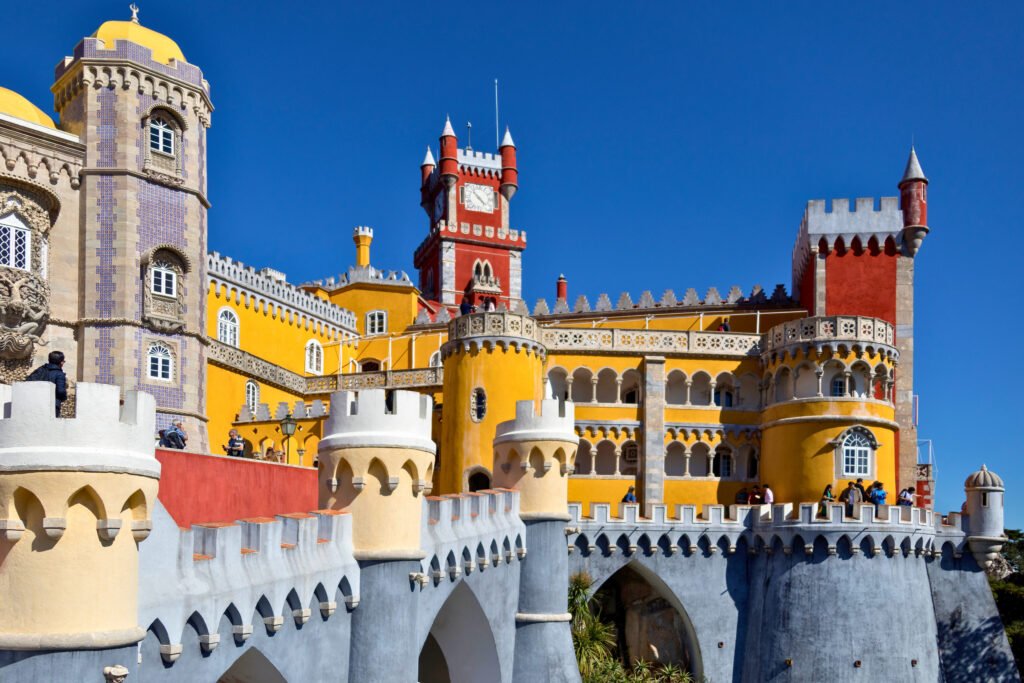
There were rumors swirling around about the palace as it was being built. Locals in Sintra were saying that treasures were buried underneath the stones of the old monastery, left by a much older civilization. Others believed that there were secret passageways from the palace deep into the heart of the mountain and still others whispered that the mists that drifted around the area and over the hill and covered the palace frequently were more than they seemed, and that this was the source of the magic of the hill and palace.
By the late 19th century, the Pena had become a symbol of Sintra’s distinctive cultural landscape. After the end of the monarchy in 1910, it became a national monument and was open to the public. In 1995, it was designated as one of the components of the “Cultural Landscape of Sintra,” which was a UNESCO World Heritage Site, and it has remained one of Europe’s great Romantic masterpieces ever since. Pena Palace is more than just a building to put on a postcard, and it is not just a building to visit because you are visiting Sintra. It is worth seeing just for the pleasure it can bring to anyone who takes the time to see it.

The Architecture & Design
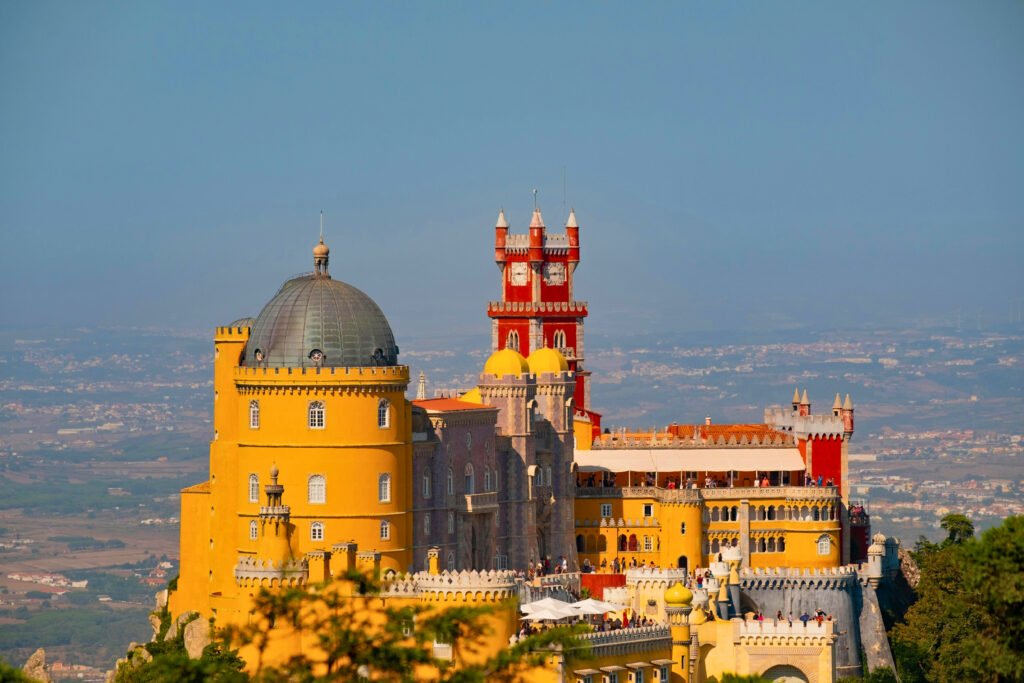
As you approach Pena Palace, the building is like a mirage appearing over the hills, and if the mist on a particular day makes things hazy, it also looks like a dream you conjure in your mind. It is like someone has thrown the brightest colors at a painter’s palette and taken it from there. From afar, the silhouette of the palace looks as if it has been lifted from a children’s fairy storybook with those odd-looking towers, the mustard yellow walls, the bright blue and white tiles, all perched on a rocky mountain outcrop. As you walk up the path and approach closer, the colors and details start to appear before you.
King Ferdinand and his architect had not just a central idea for the palace; they also had a way of putting things together, choosing styles, and blending elements. He had no particular love for the main elements of the building’s final look, but rather an appetite to be imaginative and a love for creating a collage of different influences. This was not about smooth blends; it was a deliberate explosion of stylistic architecture all held together.
The different details, mosaics, and interior designs also had their own details to be enjoyed. So, while Ferdinand had no overarching loyalty to one style, what he liked were the features. So you have Manueline with nautical-looking ropes, coral shapes, and sea motifs. There is Moorish with the horseshoe arches, the tile work, and the delicate arches framing some of the courtyards. Gothic elements with pointed windows and battlements, along with Renaissance style in the domed towers, and some of the classical columns used throughout.
The amalgamation also mixed colors most deliciously. There were the ochre-yellow walls that seemed to glow in the sun, and the contrast of that in certain areas of the building with splashes of crimson red, and then the more dainty elegance of the blue and white tiles that were azulejo. In recent years, the weather has changed some of those colors and softened the shades, but on a day when the fog is curling around the edges, you know that Pena Palace is not going to fade into the background, not with its bright, sparkly colors jumping out at you.
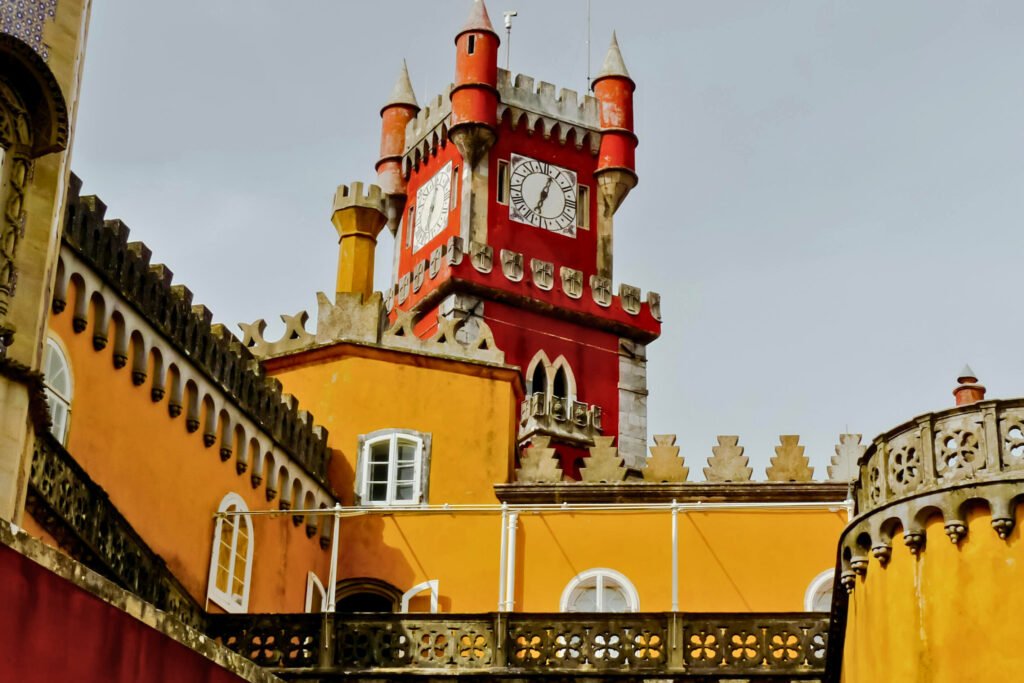
The interior of the palace is also well preserved, with rooms that are both lavish and grand. You have the formal rooms with their stucco work and painted ceilings, and with fine furniture. The more intimate rooms, such as the bedrooms and sitting rooms, have a personal touch and are decorated with a range of curiosities and items such as porcelain, portraits, and textiles.
One of the most interesting rooms in the palace is the kitchen. As you walk in, you see a series of rooms with long hearths and copper pans and pots hanging from the ceiling. The kitchen is large, and it is obvious that the working space and likely staff were needed for a household of some size. As you turn the corner, you will also find the chapel with its stained-glass windows and detailed altar.

Visiting the Palace
You cannot just ‘drop in’ on Pena Palace. It is high up on a Sintra hill, so you have to plan how to get there. You will need to think about your visit in stages. There is the approach; there are the palace interiors, and then the park and gardens that run around it. It is also one of those places where you do not want to rush and try to see everything in a short space of time. You will spoil your enjoyment; it is like reading the good bits of a book at breakneck speed so you can get to the end. Pena Palace is not that type of place.
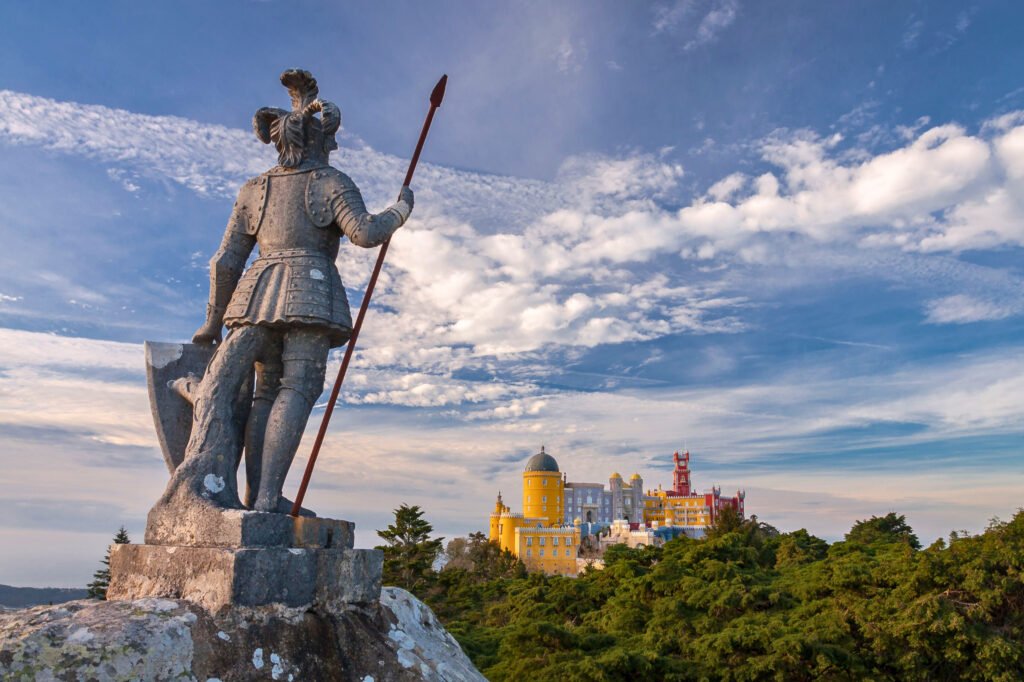
🛣️ Getting There
From Lisbon, the easiest way is to take the train from Rossio Station to Sintra. The journey time is around 40 minutes, and there are frequent trains throughout the day. Once you get off at Sintra, there are many ways you can get up the windy road and onto the plateau of Pena.
- 434 Tourist Bus: The buses take in many of the main attractions in Sintra such as the Moorish Castle and the Pena, forming a loop and returning to Sintra in the town. This is the easiest option and a good one if you have several places you want to see in one day.
- Tuk-Tuks: The three-wheeled taxis are everywhere in Sintra. It is more expensive than the bus, but they are quicker, and the drivers are often happy to be an informal guide.
- Walking/Hiking: For those with sturdy shoes and a couple of hours to spend, there is a hike from the historic center of Sintra. The path follows through the wooded trails in the park and is around 45 minutes uphill. On your way, the air is redolent of pine and damp earth, and the occasional gap in the trees gives tantalizing glimpses of the palace.
- Driving: If you are driving, you are not going to be able to get to the palace gates, and like the other options, you will need to continue up from Sintra on the bus, a tuk-tuk, or on foot.
🎟️ Tickets and Guided Tours
A standard combined ticket (Palace + Park + Chalet of the Countess of Edla) is €20 for adults (18–64) as of today. Palace doors open at 9:30 am with the last entry at 6:00 pm and exit at 6:30 pm. For the park, you will want to be there a little earlier. Buying your ticket in advance and arriving before your ticket time slot is the best way to get into the palace without a long wait.
The tickets can be booked online or purchased at the entrance, and this is the main ticket desk. There are multiple options, but if you are going to be in high season, you will be better off booking online.
- Palace & Park Ticket: This includes the ticket for the interiors, the terraces, and the grounds.
- Park-Only Ticket: This is half the price of the combined ticket (€10) and ideal if you are a return visitor to Sintra and want to have time to explore the gardens.
You can also purchase guided tours. Most visitors prefer to wander at their own pace, but do hire an audio guide if you want to have some historical context without needing to be part of a tour group.
Travel Tip: Always check the official website before you go. Hours, ticket prices, and access routes can change due to weather or maintenance.
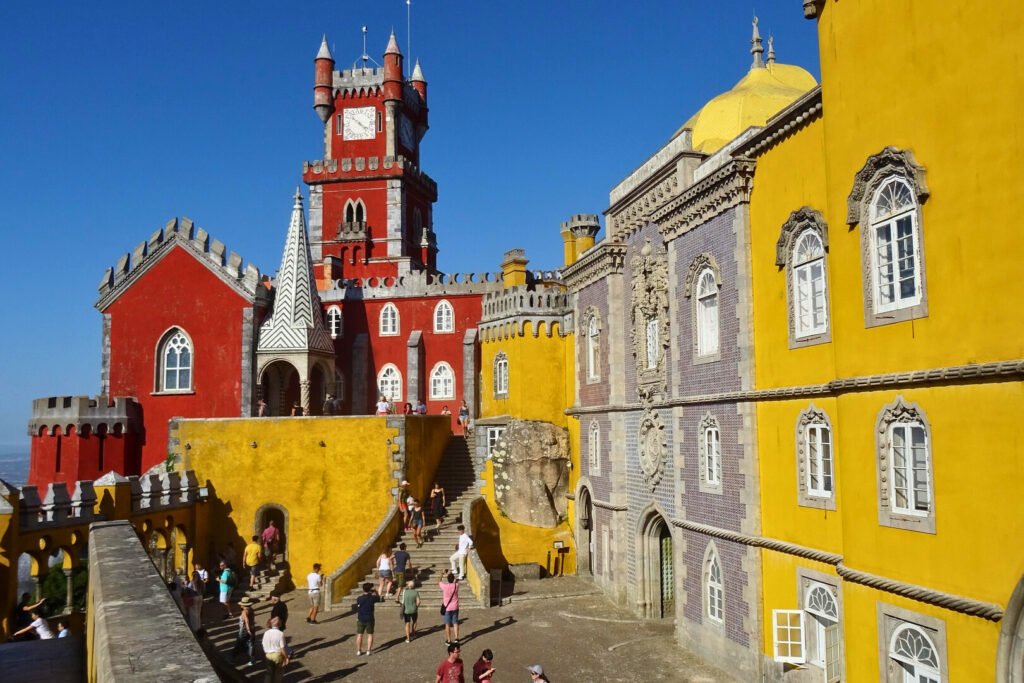
📅 Planning When to Visit Pena Palace
One thing to consider when you are thinking of the best time to visit the palace is the crowds. Like many sites, the palace gets busy, and as such, you have to plan your visit to get the best experience. The trick is to time your visit so that you can arrive at your preferred time. As you will see below in the suggestions, the visit to the palace and gardens can easily take 2–3 hours, which means timing matters and you need to start early.
- Morning: As soon as the gate opens, there are visitors waiting in line for the gates to be unlocked. Be one of the first in the gates, and you will have shorter queues, fewer people around, and the benefit of the morning light makes those colors zing.
- Late Afternoon: Late in the day, a couple of hours before closing, is also a good time for lighter crowds and the soft glow of the late afternoon light falling over the hills and through the trees.
- Seasonal Variations: Visit in Spring, and you will see the gardens in full bloom, and the weather is also very pleasant. Summer has the longest day but also brings in the crowds. Autumn is when the colors in the park are at their most vibrant. Winter is the time to see mist enveloping the palace and lending it an other-worldly look.
♿ Accessibility & Other Visiting Tips
As the palace is built on a steep hillside, there are some limitations to how accessible the grounds and interiors are. Visitors in a wheelchair can access parts of the park grounds but not the interiors of the palace itself. The palace has a series of steps and uneven flooring. To enjoy the park and gardens in some comfort, a good pair of walking shoes is essential. The grounds are 85 hectares in size, and even if you stay on the palace grounds, you are still on your feet a lot.
It is always good to be prepared, even in the summer. Take a light sweater or jacket. It can feel noticeably cooler and windier up on the hilltop than it is at the bottom in Sintra.
Photography
Pena Palace is one of those places where everyone is out with their camera, and it is to their own cost if they do not stop and take the time to do a little planning in advance. Here are a few of my favorites:
- Queen’s Terrace: It has sweeping views over Sintra and the Atlantic Ocean, and on a clear day, across to Lisbon in the distance.
- Approach to Palace: Stand at the top of the main path just before the gate for a full-shot of the façade with the greenery framing it.
- Duck Pond Reflection: This is in the Valley of the Lakes where there are ponds with the resident ducks and swans. You will also get a chance to take a reflection shot of the palace against the still water.
🌳 Gardens & Park
One of the mistakes visitors make when they visit Pena Palace is that they think it is just about the interior of the building, and that is where all the action is. I have to confess I did the same. It is only as I started to spend more time in the gardens and at the palace that I began to realize I was missing out. The Palace of Pena is a work of art and a magic place that creates an almost theatrical scene, but it is matched by the wilder, more natural, and magical sense of intimacy that you can find in the romantic landscaping, exotic plantings, and hidden follies of the Park of Pena, which is a blend of 85 hectares.
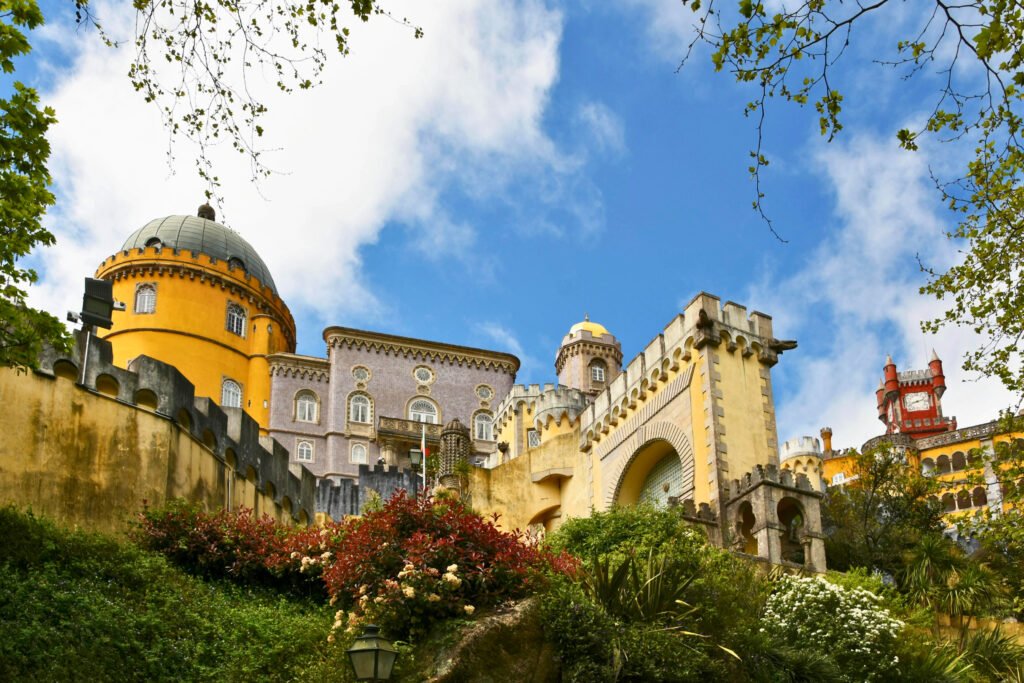
Valley of the Lakes
Near the bottom of the park, near the entrance, this is a series of ponds with small waterfalls and stone bridges. The water is often still, and it mirrors the surrounding greenery with the resident ducks and swans adding to the tranquility.
Camellia Garden
This is a garden where, in late winter and right through spring, you have camellias flowering in the park. The colors are pinks, reds, and whites, and are a riot of blooms. King Ferdinand imported many of the varieties, and they have flourished over a century later.
High Cross Viewpoint
The view from this part of the park, on the High Cross, is one of the best. On one side, you have the palace, and on the other is the Atlantic coastline, and the climb is worth the effort when you reach the top.
Chalet of the Countess of Edla
The chalet is a short distance from the palace, and it is worth a visit; unlike the palace, it has an Alpine feel to it. It is a decorative house with decorative cork on the outside and was built by Ferdinand for his second wife, Elise Hensler.
Hidden Trails and Follies
Hidden around the park are winding trails leading to small pavilions, stone benches, and grottos. These are the perfect places to take a rest, enjoy the shade, and feel like you are having a mini treasure hunt, and wondering where 19th-century royals came.
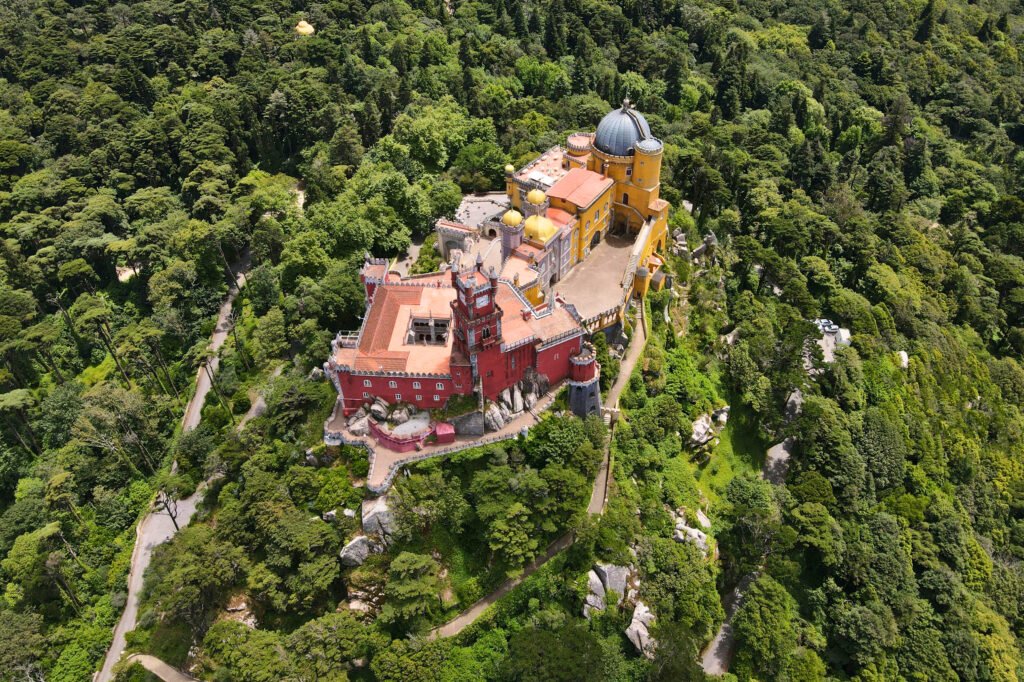
🍽️ Food, Refreshments, and Breaks
Food
Inside the park, you will find a café in the palace complex with a range of light meals, pastries, and refreshments. This is always busy on a day when Sintra is busy, and it can have long lines, so think about bringing some food and having a picnic in one of the eating areas. This is a place that is very well kept, so help keep it that way, and remember to take all the stuff you brought with you.
Eating Out
Sintra’s historic center has plenty of places to eat, from a casual bakery to a more upmarket restaurant. There is the Sintra local speciality of travesseiro (almond and egg cream pastry) and queijada (sweet cheese tart) that is almost a must before you leave the town.

Nearby Attractions
Sintra is one of those places that can never be said to be short of magic, and if you have a day or two to spare in this beautiful town, make sure you spend a good part of it here as well. After you have soaked in the delights of the Pena Palace, start walking. Every step you take in the charming village and up or down the hills around you will take you to new and spectacular destinations. No two share exactly the same atmosphere, but all are worth seeing.
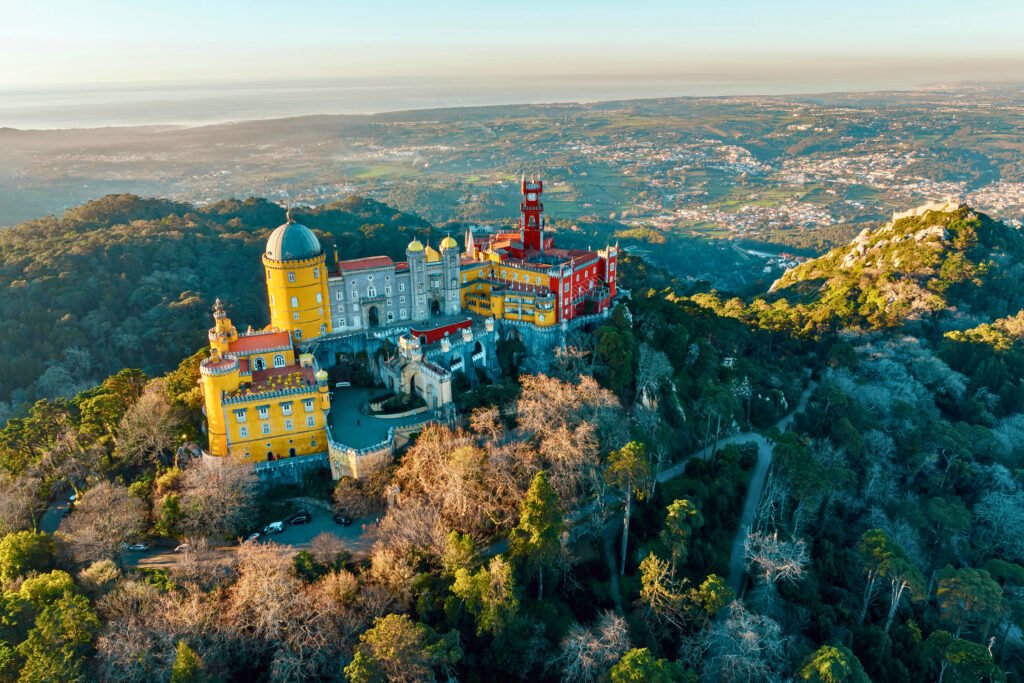
Moorish Castle (Castelo dos Mouros)
A couple of minutes’ walk away from Pena, on the next ridge. This fortress dates back to the 9th century, and the views from the battlements stretch all the way from the Atlantic Ocean to the rooftops of Sintra. Its crumbling stone walls bear the scars of centuries of wind and rain, and seem as far away from the kaleidoscopic fantasy of Pena as possible. Climbing along the crenellated parapets is a real thrill. You will get some of the best views of the palace here.
Quinta da Regaleira
The place where myth, mysticism, and architecture melt into one. The Quinta da Regaleira is one of those truly one-of-a-kind places where every square meter of wall and every square meter of floor seems to be teeming with secrets and symbolism, calling you to delve in and learn more. Legend has it that the labyrinthine network of fountains, grottoes, and hidden tunnels built beneath this fairy-tale mansion are entrances to the Underworld, a nod to the occultism that fascinated its owner at the time. The Initiation Well – a spiraling stone staircase leading down into the earth – is not to be missed. There is a lot to see, and you can easily spend a few hours here.
Sintra National Palace (Palácio Nacional de Sintra)
A stone’s throw from the center of Sintra’s old town, this whitewashed structure with its two enormous conical chimneys at the front is an immediately recognizable landmark. Inside, a riot of different architectural styles, including Moorish-influenced tilework and lavish reception halls where Portuguese royalty received visitors. It is much less garish than the Pena Palace, but equally, if not more interesting, for getting an insight into life at the royal court.
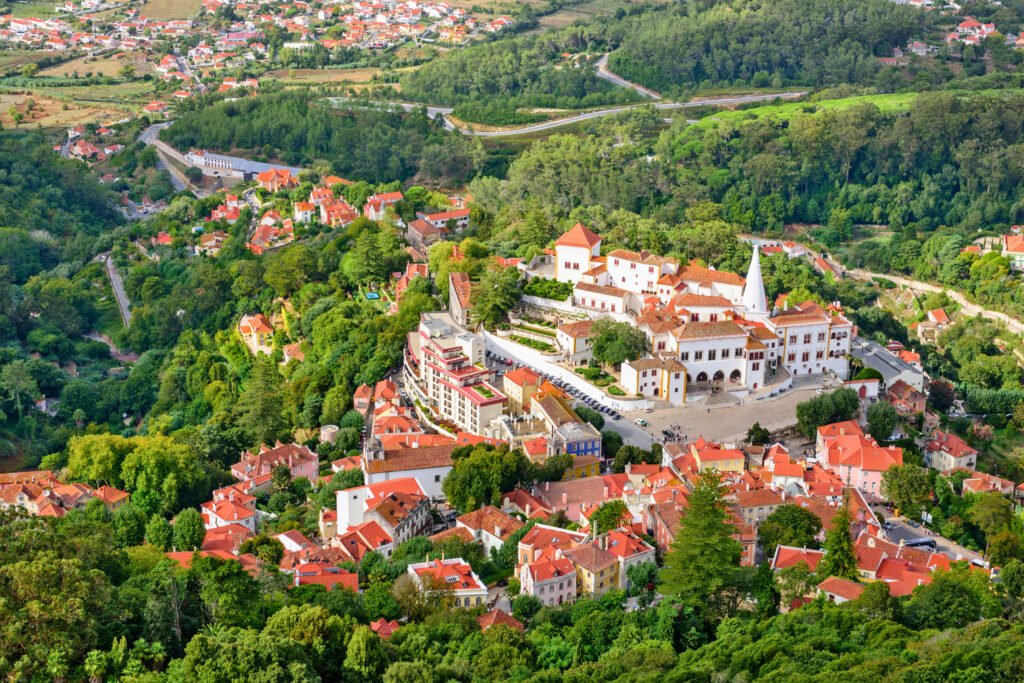
Monserrate Palace
Slightly further afield than the places above, and a little less accessible on foot, this is another unmissable destination for visitors to Sintra. Built in the Romantic style and featuring a lace-like series of domes, it looks more like a palace from the Arabian Nights than anything you would expect to find in Portugal. The gardens surrounding it are no less sumptuous and full of exotic plant species from around the world. Being a little out of the way also means that it is often a bit quieter here.
Cabo da Roca
If you have the time and energy for a short drive, make your way to the edge of the world, or the nearest thing to it in mainland Europe. Cabo da Roca is a windswept headland where the Atlantic Ocean crashes into sheer cliffs, with a lighthouse and a stone monument commemorating the fact that it is the westernmost point of the continent. The scenery is quite simply breathtaking, and even more so at sunset.
Day Trips from Lisbon or Two Days in Sintra
Whether you only have an afternoon in Sintra or can spend a whole day or two there, we strongly advise you to combine Pena Palace with a visit to the places above. Each one of them has its own story to tell, and each one is a testament to why Sintra as a whole is one of Portugal’s – and indeed Europe’s – most magical places.

Pena Palace: Top 10 Frequently Asked Questions for Visitors
How long should I plan for a visit to Pena Palace?
A visit to Pena Palace can take 2–3 hours or more, depending on how much time you want to spend exploring both inside and in the surrounding park. This does not include trips to some of the nearby attractions that we recommend, which can easily add another half day or a full day to your trip in Sintra.
Can I visit Pena Palace without a guided tour?
Yes, you can. If you buy a standard ticket, you are free to explore the palace at your own pace and take as many photos as you like. Audio guides and the Palace’s official app are available if you want more information on its history and architecture, but they are not required.
What is the current ticket price for Pena Palace?
The latest standard combined Palace + Park + Chalet ticket for adults (18–64) is €20. There are reduced rates for young people, seniors, and families. Check the Palace’s official website for up-to-date information.
What are the opening hours?
The palace itself opens at 9:30 am, with the last entry at 6:00 pm, and closes at 6:30 pm. The park opens half an hour earlier. Opening and closing times are subject to change, depending on the season and whether maintenance works are in progress. Check ahead to make sure.
Is photography allowed inside Pena Palace?
Photography is allowed, except with flash and tripods. Please be considerate of other visitors: some rooms can get very crowded.
How do I get to Pena Palace from Lisbon?
Take the train from Rossio Station to Sintra (approx. 40 min). From there, there is the 434 tourist bus, tuk-tuks, and the option of following the signs from the railway station up through the park. Private cars are not allowed up to the palace gates.
Is Pena Palace wheelchair accessible?
Part of the park is wheelchair-accessible, but wheelchair access to the palace interiors is limited, as the interior areas involve a lot of steps and uneven floors. The official website has more information.
Can I bring food into Pena Palace?
Visitors are welcome to bring food and drinks into the park’s designated areas. There are also cafés on-site that offer light meals, pastries, and beverages.
What’s the best time of year to visit Pena Palace?
The best time to visit Pena Palace is in spring and autumn, when the weather is mild and the surrounding foliage is at its lushest and greenest. Summers are long and bright, but also very busy. Winter is quieter, and can be atmospheric as mist often rolls in.
What else should I see nearby?
Make sure you see the Moorish Castle, Quinta da Regaleira, Sintra National Palace, Monserrate Palace, and Cabo da Roca, all within easy reach.
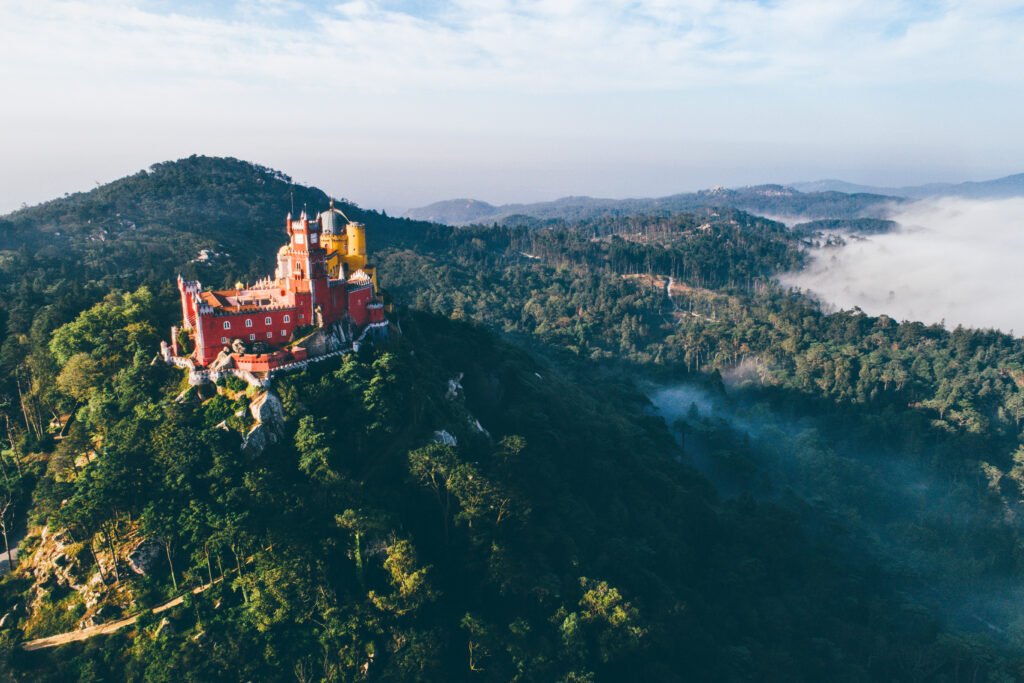

Final Thoughts
Pena Palace is a triumph of color and creativity, a place that seems to have been born with the clouds, perched high above the world. As you walk along its terraces, with the whole of Sintra spread out below you and the sea sparkling in the distance, it is easy to understand the inspiration of King Ferdinand II. It is a place where history wears a painter’s palette and where every nook and cranny seems to have a story to tell.
Don’t hesitate to put Pena on your list if you are planning a trip to Portugal. Get there early, walk around in the gardens, and return at various points in the day. The way the shifting sunlight transforms your perception of the palace is amazing, and whether shrouded in a morning mist or washed in the golden glow of the late afternoon sun, it never fails to impress.
💬 Done it yet? Share your thoughts below. Or tag us on Instagram @CastleQuestChronicles!
👉 Are you a fan of unique castles? Check out our deep dives into Spain’s Alhambra or Prague Castle for some other incredible places to put on your bucket list.
🏰✨Thanks for reading. If you found this article interesting, be sure to follow us along. We are also on Instagram, Facebook, Pinterest, YouTube, TikTok, and X. You can also see all our castle stories here! More castles (and more stories) are on the way.

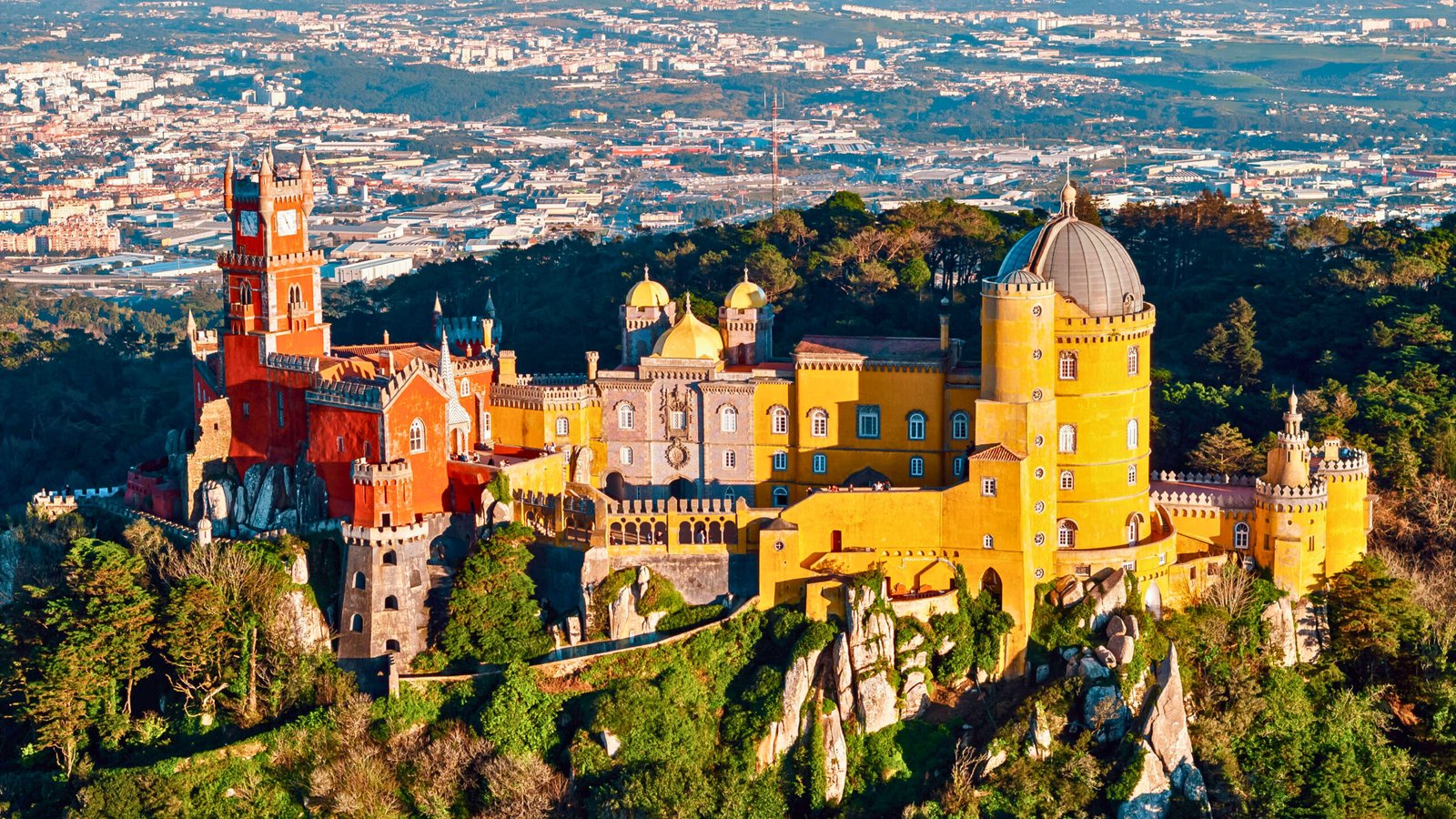




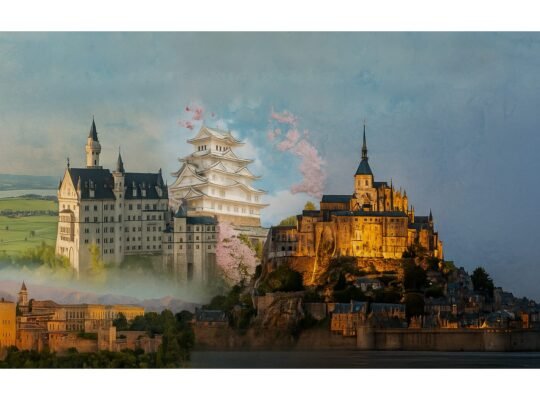
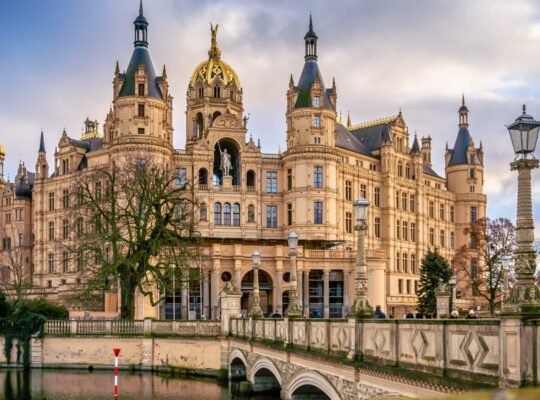
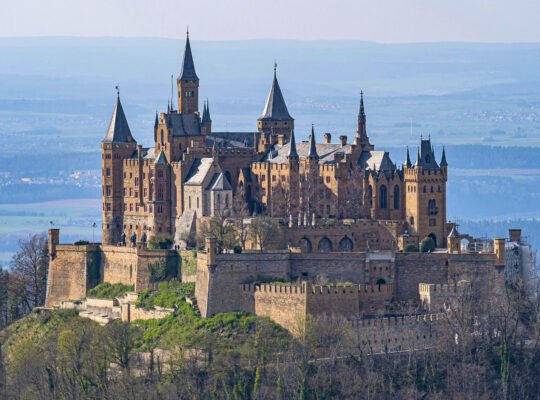
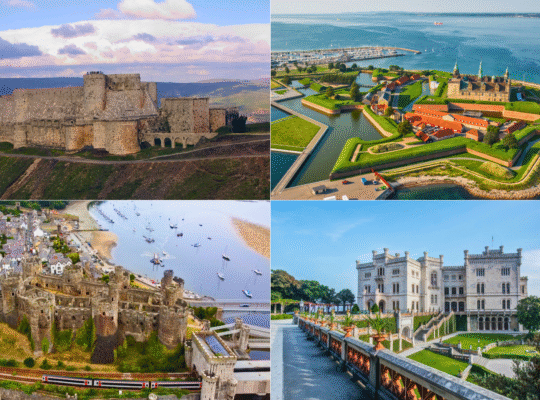
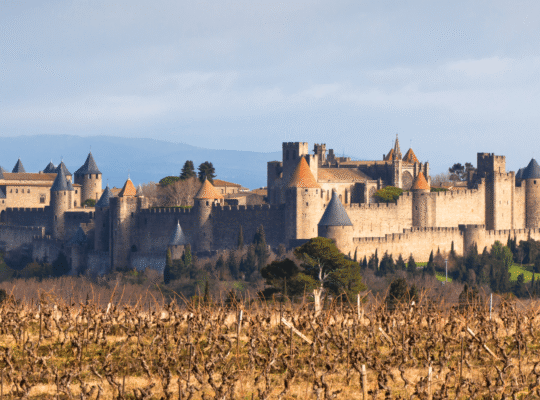
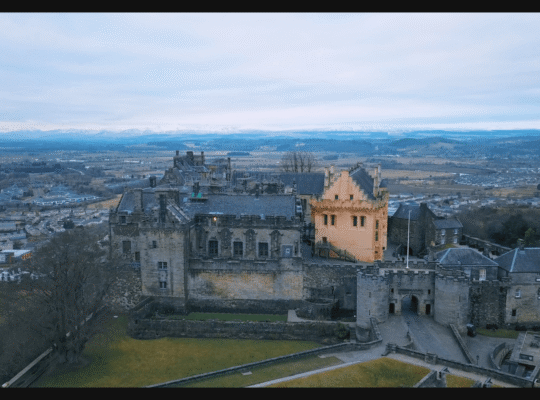
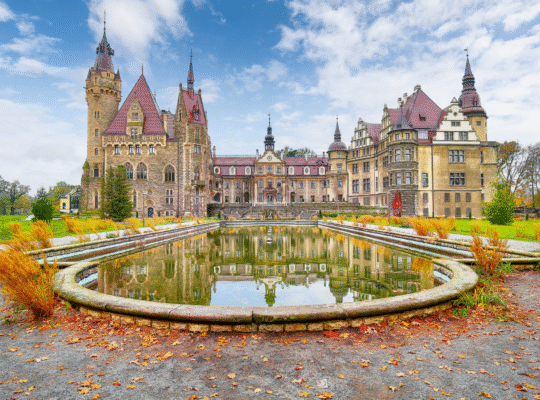
1 Comment